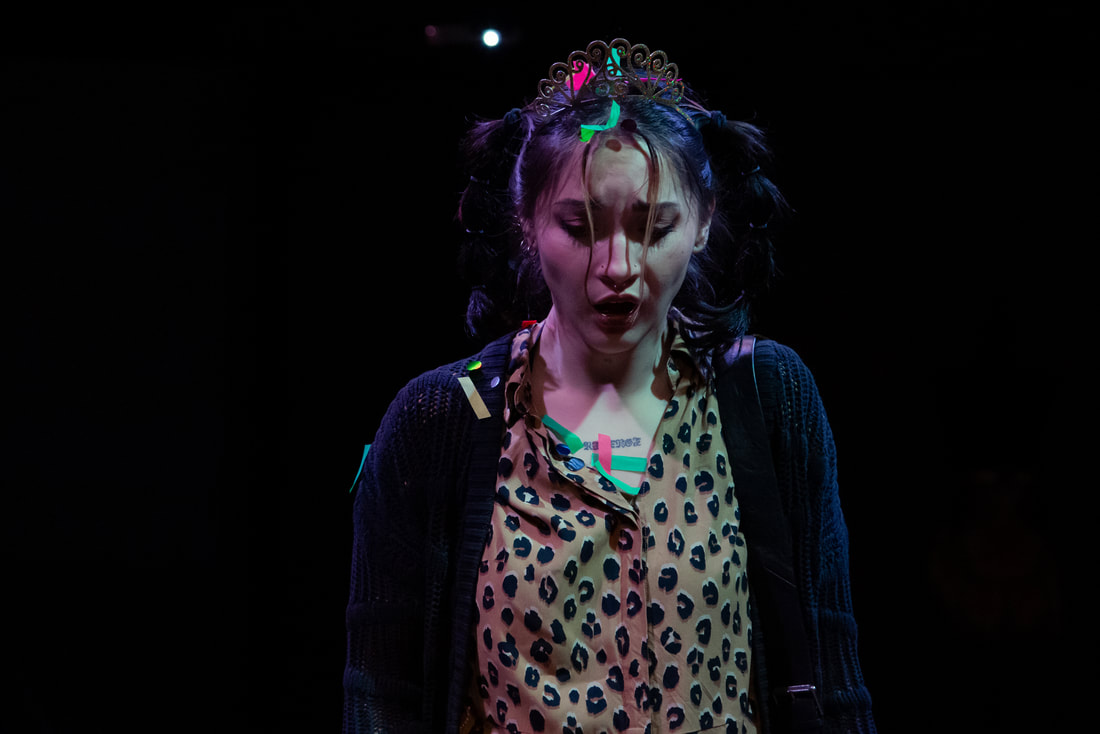Shaking The Tree Theatre
- WELCOME
- SHOWS & EVENTS
- WORKSHOPS
- RENTALS
- RESIDENCIES
- DONATE
- CONTACT
- ABOUT
-
ARCHIVE
- NOTHING LEFT TO LOSE: A MULTIMEDIA SUMMER FESTIVAL
- THE BROTHER AND THE BIRD
- WE WROTE THIS WITH YOU IN MIND
- BLOOD WEDDING
- IN A DIFFERENT REALITY SHE'S CLAWING AT THE WALLS
- FORBIDDEN FRUIT
- FUCKING A
- MODELMINORITY
- CHICK FIGHT
- COMMUNITY IN CONVERSATION
- FAMILY
- 家 人 (JIA REN)
- REFUGE
- SHORT FLIX
- BAKKHAI
- ESCAPED ALONE
- MADE TO DANCE IN BURNING BUILDINGS
- _____ THE WOLF
- SALT
- MACBETH
- THE CAUCASIAN CHALK CIRCLE
- COME TO THE TABLE
- MISS JULIE
- WE'RE ALL MAD HERE
- HEAD . HANDS . FEET
- ORPHEUS AND EURYDICE
- A DOLL'S HOUSE
- PASSION PLAY
- SUDDENLY LAST SUMMER
- MASQUE OF THE RED DEATH
- ONE FLEA SPARE
- WILDE TALES
- FAR AWAY
- THE TRIPPING POINT
- WELCOME
- SHOWS & EVENTS
- WORKSHOPS
- RENTALS
- RESIDENCIES
- DONATE
- CONTACT
- ABOUT
-
ARCHIVE
- NOTHING LEFT TO LOSE: A MULTIMEDIA SUMMER FESTIVAL
- THE BROTHER AND THE BIRD
- WE WROTE THIS WITH YOU IN MIND
- BLOOD WEDDING
- IN A DIFFERENT REALITY SHE'S CLAWING AT THE WALLS
- FORBIDDEN FRUIT
- FUCKING A
- MODELMINORITY
- CHICK FIGHT
- COMMUNITY IN CONVERSATION
- FAMILY
- 家 人 (JIA REN)
- REFUGE
- SHORT FLIX
- BAKKHAI
- ESCAPED ALONE
- MADE TO DANCE IN BURNING BUILDINGS
- _____ THE WOLF
- SALT
- MACBETH
- THE CAUCASIAN CHALK CIRCLE
- COME TO THE TABLE
- MISS JULIE
- WE'RE ALL MAD HERE
- HEAD . HANDS . FEET
- ORPHEUS AND EURYDICE
- A DOLL'S HOUSE
- PASSION PLAY
- SUDDENLY LAST SUMMER
- MASQUE OF THE RED DEATH
- ONE FLEA SPARE
- WILDE TALES
- FAR AWAY
- THE TRIPPING POINT
Chick Fight was devised by the ensemble
de·vise
/dəˈvīz/
1.plan or invent (a complex procedure, system, or mechanism) by careful thought.
Devising is when a group/ensemble comes together to explore a theme, and then creates a play from scratch out of the workshop material that has been generated.
In the devising room, we were very interested in looking at how we make monsters of women and then shame them for being the monsters they’ve become, as well as examining the knife edge some women have to walk between glorification and villainization.
We were lucky enough to have extraordinary playwright, Sara Jean Accuardi in the room with us for the entire ride, and she created the script from all the discussions, improvisations, and brainstorming sessions we had.
/dəˈvīz/
1.plan or invent (a complex procedure, system, or mechanism) by careful thought.
Devising is when a group/ensemble comes together to explore a theme, and then creates a play from scratch out of the workshop material that has been generated.
In the devising room, we were very interested in looking at how we make monsters of women and then shame them for being the monsters they’ve become, as well as examining the knife edge some women have to walk between glorification and villainization.
We were lucky enough to have extraordinary playwright, Sara Jean Accuardi in the room with us for the entire ride, and she created the script from all the discussions, improvisations, and brainstorming sessions we had.
We have a secret to share
Did you know that we have a different winner each night?
Our brilliant Fight Choreographer, Kristen Mun, presented the idea to us, and we loved it! Here's what Kristen has to say:
Why alternate the killing?
"When I read Chick Fight I loved how evenly-matched She and Her were, AND I loved that the story almost ended in a tie. While reading Chick Fight, I heard both actresses' voices as both She and Her, so when I got to the end in my mind I wasn't really sure who died. Selfishly I wanted both to win. Sara Jean's script has a feeling of spontaneity and fun randomness. Each "round" is playful, dark, and filled with twists and turns that keep both characters on their toes. There are even times where they are surprised that they win! I wanted the fight to fit into that world. Playful, dark and keep you, the audience on your toes. The winner of Chick Fight changes every night and what determines the winner is something that no one has control over. And what determines the winner? You, the audience. Just by purchasing a ticket and sitting in your seat, you have unknowingly picked your champion and determined the survivor. I hope you took your selfie, because who knows what will happen tomorrow."
Our brilliant Fight Choreographer, Kristen Mun, presented the idea to us, and we loved it! Here's what Kristen has to say:
Why alternate the killing?
"When I read Chick Fight I loved how evenly-matched She and Her were, AND I loved that the story almost ended in a tie. While reading Chick Fight, I heard both actresses' voices as both She and Her, so when I got to the end in my mind I wasn't really sure who died. Selfishly I wanted both to win. Sara Jean's script has a feeling of spontaneity and fun randomness. Each "round" is playful, dark, and filled with twists and turns that keep both characters on their toes. There are even times where they are surprised that they win! I wanted the fight to fit into that world. Playful, dark and keep you, the audience on your toes. The winner of Chick Fight changes every night and what determines the winner is something that no one has control over. And what determines the winner? You, the audience. Just by purchasing a ticket and sitting in your seat, you have unknowingly picked your champion and determined the survivor. I hope you took your selfie, because who knows what will happen tomorrow."
Playwright: Sara Jean Accuardi

Sara Jean Accuardi is an award-winning playwright and the recipient of the 2021 Oregon Literary Arts Leslie Bradshaw Fellowship for Drama. Her full-length plays include The Delays, BREAK, The Storyteller, < 3, and Portrait of the Widow Kinski. Her writing has been produced and developed around the country, including with Theatre Vertigo, Seven Devils New Play Foundry, Victory Gardens, Portland Center Stage, Chicago Dramatists, The Blank Theatre, Spooky Action Theater, Vivid Stage, and PlayMakers Repertory Company. Sara Jean holds an MFA in Writing for the Screen and Stage from Northwestern University and is a proud member of the Dramatist Guild and LineStorm Playwrights. www.sarajeanaccuardi.com
Director & Set Designer: Samantha Van Der Merwe

"She creates lush, often dark and fantastical, environments that bring home the hard issues we need to face but are often unwilling to do on a daily basis. It’s a vision that needs to be supported because in her hands, some plays can be transformative."
Born in Johannesburg, South Africa, Samantha Van Der Merwe has now lived in the United States for 26 years, and is the founding Artistic Director of Shaking the Tree Theatre in Portland, OR.
Founded in 2003, Shaking the Tree Theatre has become known for melding the boundaries of theatre and visual art by presenting thrilling and unconventional theatrical experiences. Samantha is a proud member of SDC (Stage Directors and Choreographers Society), and TCG (Theatre Communications Group). Directing projects include: Family (Celine Song), REFUGE (Art Installation/Devised), BAKKHAI (Euripides/Anne Carson), Escaped Alone (Caryl Churchill), _____ the wolf (devised), SALT (devised), Macbeth (William Shakespeare), The Caucasian Chalk Circle (Bertolt Brecht), Come to the Table, Mike Pence (Devised), Miss Julie (August Strindberg, adapted by Craig Lucas), We're All Mad Here (Devised), Venus and Adonis (William Shakespeare), Head. Hands. Feet. (Devised & Edna O’Brien), Orpheus and Eurydice (Devised), A Doll's House (Henrik Ibsen, adapted by Frank McGuinness), Passion Play (Sarah Ruhl), Suddenly Last Summer (Tennessee Williams), Masque of the Red Death (Featuring Playwrights West), One Flea Spare (Naomi Wallace), Wilde Tales (Oscar wilde, adapted by Karin Magaldi), Far Away (Caryl Churchill), The Tripping Point (Featuring Playwrights West).
Born in Johannesburg, South Africa, Samantha Van Der Merwe has now lived in the United States for 26 years, and is the founding Artistic Director of Shaking the Tree Theatre in Portland, OR.
Founded in 2003, Shaking the Tree Theatre has become known for melding the boundaries of theatre and visual art by presenting thrilling and unconventional theatrical experiences. Samantha is a proud member of SDC (Stage Directors and Choreographers Society), and TCG (Theatre Communications Group). Directing projects include: Family (Celine Song), REFUGE (Art Installation/Devised), BAKKHAI (Euripides/Anne Carson), Escaped Alone (Caryl Churchill), _____ the wolf (devised), SALT (devised), Macbeth (William Shakespeare), The Caucasian Chalk Circle (Bertolt Brecht), Come to the Table, Mike Pence (Devised), Miss Julie (August Strindberg, adapted by Craig Lucas), We're All Mad Here (Devised), Venus and Adonis (William Shakespeare), Head. Hands. Feet. (Devised & Edna O’Brien), Orpheus and Eurydice (Devised), A Doll's House (Henrik Ibsen, adapted by Frank McGuinness), Passion Play (Sarah Ruhl), Suddenly Last Summer (Tennessee Williams), Masque of the Red Death (Featuring Playwrights West), One Flea Spare (Naomi Wallace), Wilde Tales (Oscar wilde, adapted by Karin Magaldi), Far Away (Caryl Churchill), The Tripping Point (Featuring Playwrights West).
Cast
SHE, a monstrous thing: Kayla Hanson
HER, a monstrous thing: Rebby Yuer Foster
HIM, a constant presence; plays the cello: Armon LaLonde
VOICE FROM ABOVE: Sam Dinkowitz
UNDERSTUDY: Leiana Petlewski
FEATURED FISH: Earl Falkenberg
HER, a monstrous thing: Rebby Yuer Foster
HIM, a constant presence; plays the cello: Armon LaLonde
VOICE FROM ABOVE: Sam Dinkowitz
UNDERSTUDY: Leiana Petlewski
FEATURED FISH: Earl Falkenberg

Kayla Hanson (she/her) is an interdisciplinary artist with a BA in Theatre Arts and a minor in Film Studies from Boise State University. She’s passionate about art that is movement-based, experimental, and that aims to rethink modes of storytelling. She’s a founding member of the Red Balloon Artist Collective and has performed in Portland with Shaking the Tree Theatre, Third Rail Repertory Theatre, Rutabaga Story Co.,Theatre Vertigo, and RBAC. Recent notable roles include Charlie in the upcoming short film “Molly Molly Molly”, Our Lady of Essence and Exchange in “Refuge” at Shaking the Tree Theatre, Young Woman in “Arlington: A Love Story” with Third Rail Repertory Theatre, Avoid in “The Ways We Cope” with Red Balloon Theatre Collective, and Grand-mere in “___the wolf” at Shaking the Tree Theatre. In her free time she enjoys creating narrative-based playlists, cake decorating, and cuddling with her pup, Ada.
IG: @campfire_vampire
IG: @campfire_vampire

Rebby Yuer Foster (they/she/he) is the Associate Artistic Director of Shaking the Tree Theatre. Recent pieces with Shaking the Tree include, Family (Alice), 家人: A Self Portrait (director/editor), Refuge: Our Lady of Lunar Reflection (director/editor), The Edge (director/editor), 抜け首 (director/editor). Recent acting credits include Once (Seacoast Repertory Theatre), We’ve Come to Believe (Humana Festival ‘19), Dracula (Actor’s Theatre of Louisville), & Xiaoyen (Actor’s Theatre of Louisville). Rebby is a former Acting Apprentice at the Actor’s Theatre of Louisville ‘18-19. They grew up in Seattle, Washington and received their B.A. in Theatre & English at the University of Portland. @rebbyyuer
Armon LaLonde (he/him) is a classically trained cellist from Los Angeles, California. This will be Armon’s theatre debut. Armon’s style of musical expression is heavily influenced by Pyotr Tchaikovsky, Mstislav Rostropovich & Jacqueline du Pré. Armon has worked extensively with Junior Chamber Music Society & Inner City Youth Orchestra of Los Angeles. He is excited to add the element of cello to this Shaking the Tree production.
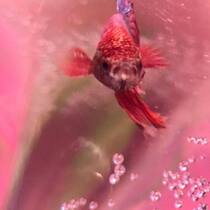
Earl Falkenberg (Fish)
Earl is thrilled to be debuting as the featured fish in the Siren installation. Ever since he was a small fry, Earl was putting together shows with all his friends, but then he realized his calling to solo work. He was last seen reciting the full works of William Shakespeare at Pets on Broadway.
Earl would like to try his fin at film next, so if you need a fish actor, please contact his agents at shaking-the-tree.com
Earl is thrilled to be debuting as the featured fish in the Siren installation. Ever since he was a small fry, Earl was putting together shows with all his friends, but then he realized his calling to solo work. He was last seen reciting the full works of William Shakespeare at Pets on Broadway.
Earl would like to try his fin at film next, so if you need a fish actor, please contact his agents at shaking-the-tree.com
Creative
Griffin Dewitt (Lighting Designer)
Griffin is thrilled to be returning to Shaking the Tree - and the greater Portland area, after living in Ohio for the last 5 years. He would like to thank his incredible partner Josie for supporting him, as well as Colly and Miles. Griffin graduated with his BA in Theatre from Pacific University. Learn more about Griffin's work at www.griffindewitt.design
Griffin is thrilled to be returning to Shaking the Tree - and the greater Portland area, after living in Ohio for the last 5 years. He would like to thank his incredible partner Josie for supporting him, as well as Colly and Miles. Griffin graduated with his BA in Theatre from Pacific University. Learn more about Griffin's work at www.griffindewitt.design

Matt Wiens (Sound Designer)
Matt is a Portland-based composer and sound designer and is happy to be collaborating again with Shaking The Tree Theatre. Recent work includes Family, Refuge, The Bakkhai, and Escaped Alone with Shaking the Tree Theatre; Gloria, The Mineola Twins, Las Meninas, The Baltimore Waltz, Well, and Let Me Down Easy with Profile Theater; Indecent with Artists Rep; MALA with CoHo Productions, and Barbecue with The Portland Playhouse. Matt holds a BA in Theater from Goshen College and a Masters in Music Technology from NYU. You can hear his music at soundcloud.com/mattwiens.
Matt is a Portland-based composer and sound designer and is happy to be collaborating again with Shaking The Tree Theatre. Recent work includes Family, Refuge, The Bakkhai, and Escaped Alone with Shaking the Tree Theatre; Gloria, The Mineola Twins, Las Meninas, The Baltimore Waltz, Well, and Let Me Down Easy with Profile Theater; Indecent with Artists Rep; MALA with CoHo Productions, and Barbecue with The Portland Playhouse. Matt holds a BA in Theater from Goshen College and a Masters in Music Technology from NYU. You can hear his music at soundcloud.com/mattwiens.

Jared Jonas (Video Engineer)
Jared Jonas is a theatre technician from Boise, ID and has been doing theatre with companies around the United States for the better part of a decade. He found a passion for theatre in college and subsequently decided to pursue educational theatre as well. During the day Jared is the Technical Director for the Oregon Thespian Troupe #632 at Canby High School in Canby, OR. He considers himself a fanatic of extreme music, visual arts, and furry animals. This is Jared's first show back in the Portland scene since theaters have reopened from the pandemic and he is thrilled to be working with Shaking the Tree again.
Jared Jonas is a theatre technician from Boise, ID and has been doing theatre with companies around the United States for the better part of a decade. He found a passion for theatre in college and subsequently decided to pursue educational theatre as well. During the day Jared is the Technical Director for the Oregon Thespian Troupe #632 at Canby High School in Canby, OR. He considers himself a fanatic of extreme music, visual arts, and furry animals. This is Jared's first show back in the Portland scene since theaters have reopened from the pandemic and he is thrilled to be working with Shaking the Tree again.
Trevor Sargent (Video Engineer)

Alison Heryer (Costume Designer)
Alison Heryer is an interdisciplinary artist whose work combines costume, installation, performance, and community engagement. As a costume designer, she is a member of United Scenic Artists, Local 829. Her design credits include productions at Steppenwolf Theatre Company, 59E59 Theaters, La MaMa, The New Victory Theater, Portland Center Stage, Portland Opera, Kansas City Repertory Theatre, Indiana Repertory Theatre, Artists Repertory Theatre, ZACH Theatre, The Hypocrites, and Redmoon. Her work has been featured in exhibitions at the Nelson Atkins Museum of Art, World Stage Design, and The Prague Quadrennial of Performance Design and Space. She is a faculty member at Portland State University where she was recently granted the Sue Horn-Caskey & Charles F. Caskey Professorship of Textile Arts & Costume Design. Heryer’s 2021/2022 projects have been generously supported by a RACC Build Grant.
Alison Heryer is an interdisciplinary artist whose work combines costume, installation, performance, and community engagement. As a costume designer, she is a member of United Scenic Artists, Local 829. Her design credits include productions at Steppenwolf Theatre Company, 59E59 Theaters, La MaMa, The New Victory Theater, Portland Center Stage, Portland Opera, Kansas City Repertory Theatre, Indiana Repertory Theatre, Artists Repertory Theatre, ZACH Theatre, The Hypocrites, and Redmoon. Her work has been featured in exhibitions at the Nelson Atkins Museum of Art, World Stage Design, and The Prague Quadrennial of Performance Design and Space. She is a faculty member at Portland State University where she was recently granted the Sue Horn-Caskey & Charles F. Caskey Professorship of Textile Arts & Costume Design. Heryer’s 2021/2022 projects have been generously supported by a RACC Build Grant.
Anand Boucher- Colbert (Assistant Costume Designer & Graphic Designer)
Anand is a Portland based designer who focuses on fashion and garment creation. Their project history includes endeavors such as making merchandise for local businesses and working for fashion companies like depop to create unique content to draw people into the fashion world. Anand has a background in visual arts, photography and design but fashion/styling is the creative path they follow these days. To see more of their work visit them on Instagram at @f.6x2
Anand is a Portland based designer who focuses on fashion and garment creation. Their project history includes endeavors such as making merchandise for local businesses and working for fashion companies like depop to create unique content to draw people into the fashion world. Anand has a background in visual arts, photography and design but fashion/styling is the creative path they follow these days. To see more of their work visit them on Instagram at @f.6x2
Kristen Mun (Fight Choreographer)
Kristen Mun was born and raised on the island of Oahu where she started her theatrical stage combat training. She has been working as a fight choreographer and teacher in the city of Portland, OR for the past 10 years. She owes her training to Dueling Arts International and her time as assistant fight choreographer at the Oregon Shakespeare Festival (09-10) with resident Fight Director U. Jonathan Toppo. She has received multiple Awards for Best Fight Choreography most recently, Tender Napalm 2018, Girl in the Red Corner 2019. When she is not a fight choreographer Kristen is a proud AEA stage manager and Racial Justice facilitator.
Kristen Mun was born and raised on the island of Oahu where she started her theatrical stage combat training. She has been working as a fight choreographer and teacher in the city of Portland, OR for the past 10 years. She owes her training to Dueling Arts International and her time as assistant fight choreographer at the Oregon Shakespeare Festival (09-10) with resident Fight Director U. Jonathan Toppo. She has received multiple Awards for Best Fight Choreography most recently, Tender Napalm 2018, Girl in the Red Corner 2019. When she is not a fight choreographer Kristen is a proud AEA stage manager and Racial Justice facilitator.
Victoria Hilton (Technical Director & Set Design Collaborator)
Victoria is a local builder, designer, and all around maker. When she is not collaborating on a design-build with Shaking the Tree Theatre, she is in her final year pursuing a degree in architecture. Recent work includes Technical Director for Family with Shaking The Tree, Fabricator for Figure Plant, Master Carpenter and Scene Shop Supervisor for PCC Performing Arts Center and Mobile Museum Engineer for The City Repair Project. Victoria loves the excitement of the theater world and is pursuing a long-term career in design-build.
Victoria is a local builder, designer, and all around maker. When she is not collaborating on a design-build with Shaking the Tree Theatre, she is in her final year pursuing a degree in architecture. Recent work includes Technical Director for Family with Shaking The Tree, Fabricator for Figure Plant, Master Carpenter and Scene Shop Supervisor for PCC Performing Arts Center and Mobile Museum Engineer for The City Repair Project. Victoria loves the excitement of the theater world and is pursuing a long-term career in design-build.
Master Carpenter: Adrian Cadena
Spencer Fork (Master Electrician)
Spencer Fork is a recent graduate of the University of Oregon who majored in Theatre Arts with a focus in Lighting Design. Creating theatre has been an integral part of his life since high school, and he has grown passionate about how design can compliment storytelling. He is thrilled to be working with Shaking the Tree again as they reopen their space for live performances. Besides theatre, he also enjoys playing the piano and jamming with friends.
Spencer Fork is a recent graduate of the University of Oregon who majored in Theatre Arts with a focus in Lighting Design. Creating theatre has been an integral part of his life since high school, and he has grown passionate about how design can compliment storytelling. He is thrilled to be working with Shaking the Tree again as they reopen their space for live performances. Besides theatre, he also enjoys playing the piano and jamming with friends.

Emily Hogan (Stage Manager)
Emily is a theater artist located in Portland, OR, beyond excited to be working again with Shaking the Tree, having previously served as Assistant Stage Manager for Family. A transplant from Lompoc, CA, Emily attended the University of Portland, studying acting and dramaturgy. You may have seen Emily on the stage for Xmas Cuento Remix and Huinca at Milagro, and Made to Dance in Burning Buildings at Shaking the Tree. Emily has also been a dramaturg on numerous productions, including i defy you, stars (Do It For Mead), The Killing Fields (Orphic), and Jaffa Gate (Northwest Theatre Workshop). Emily is a middle child and a double Sagittarius.
Emily is a theater artist located in Portland, OR, beyond excited to be working again with Shaking the Tree, having previously served as Assistant Stage Manager for Family. A transplant from Lompoc, CA, Emily attended the University of Portland, studying acting and dramaturgy. You may have seen Emily on the stage for Xmas Cuento Remix and Huinca at Milagro, and Made to Dance in Burning Buildings at Shaking the Tree. Emily has also been a dramaturg on numerous productions, including i defy you, stars (Do It For Mead), The Killing Fields (Orphic), and Jaffa Gate (Northwest Theatre Workshop). Emily is a middle child and a double Sagittarius.
Pedro Adan Dominguez (Assistant Stage Manager)
Pedro Adan Dominguez (He/They) is excited to work with Shaking the Tree for their first time! They’re a Texas transplant, creating art with their friends, helping out as much they can, and trying to live their best life. Recently they’ve stage managed Vanport Mosaic’s Martha Bakes at CoHo and acted in the upcoming web series, Dearest Eva, as chaotic bisexual, Carlos; has been in multiple readings for Pulp Stage, and played Cesar Chavez in Huelga at Milagro. Stay safe out there folks!
Pedro Adan Dominguez (He/They) is excited to work with Shaking the Tree for their first time! They’re a Texas transplant, creating art with their friends, helping out as much they can, and trying to live their best life. Recently they’ve stage managed Vanport Mosaic’s Martha Bakes at CoHo and acted in the upcoming web series, Dearest Eva, as chaotic bisexual, Carlos; has been in multiple readings for Pulp Stage, and played Cesar Chavez in Huelga at Milagro. Stay safe out there folks!
Pancho Savery (Dramaturg)
Pancho Savery is Professor of English, Humanities, American Studies, and Comparative Race and Ethnicity Studies at Reed College, where he teaches courses on modern and contemporary drama, African-American literature, American literature and culture, and American Indian fiction. He has published essays on Ralph Ellison, Saunders Redding, James Baldwin, Adrienne Rich, Robert Creeley, Ezra Pound, Samuel Beckett, Paula Vogel, Tennessee Williams, Sarah Ruhl, Brandon Jacobs-Jenkins, Mike Lew, Lucas Hnath, Euripides, and others. He serves on the Board of Directors of Artists Repertory Theatre (chair), Boom Arts (chair), Clackamas Repertory Theatre, Corrib Theatre (chair), Original Practice Shakespeare (co-chair), P.E.T.E. (chair), PHAME (immediate past chair), Portland Playhouse, The Red Door Project, Shaking the Tree Theatre, Third Rail Repertory Theatre, and Our Children Oregon. He has worked as dramaturg at Artists Repertory Theatre, Clackamas Repertory Theatre, Corrib Theatre, Portland Center Stage, Profile Theatre, Shaking the Tree Theatre, and Third Rail Repertory Theatre. Additionally, he is Literary Dramaturg at Artists Repertory Theatre, Literary Manager at Corrib, and Third Rail, and Artistic Associate at Shaking the Tree. He is a member of the Mercury and DNA:Oxygen theatre companies, is a member of The Modern Language Association, LMDA, TCG, and the Jazz Journalists Association. He is also past Vice President and President of PDX Jazz.
Pancho Savery is Professor of English, Humanities, American Studies, and Comparative Race and Ethnicity Studies at Reed College, where he teaches courses on modern and contemporary drama, African-American literature, American literature and culture, and American Indian fiction. He has published essays on Ralph Ellison, Saunders Redding, James Baldwin, Adrienne Rich, Robert Creeley, Ezra Pound, Samuel Beckett, Paula Vogel, Tennessee Williams, Sarah Ruhl, Brandon Jacobs-Jenkins, Mike Lew, Lucas Hnath, Euripides, and others. He serves on the Board of Directors of Artists Repertory Theatre (chair), Boom Arts (chair), Clackamas Repertory Theatre, Corrib Theatre (chair), Original Practice Shakespeare (co-chair), P.E.T.E. (chair), PHAME (immediate past chair), Portland Playhouse, The Red Door Project, Shaking the Tree Theatre, Third Rail Repertory Theatre, and Our Children Oregon. He has worked as dramaturg at Artists Repertory Theatre, Clackamas Repertory Theatre, Corrib Theatre, Portland Center Stage, Profile Theatre, Shaking the Tree Theatre, and Third Rail Repertory Theatre. Additionally, he is Literary Dramaturg at Artists Repertory Theatre, Literary Manager at Corrib, and Third Rail, and Artistic Associate at Shaking the Tree. He is a member of the Mercury and DNA:Oxygen theatre companies, is a member of The Modern Language Association, LMDA, TCG, and the Jazz Journalists Association. He is also past Vice President and President of PDX Jazz.
Kai Hynes (Box Office Manager)
Kai is a performing artist originally from San Jose, California, with a B.A. in English and Theatre from the University of Portland. He is so grateful to be working with Shaking the Tree in a new capacity as its Box Office and Front of House Manager. His love for this company and its mission runs deep. :-)
Kai is a performing artist originally from San Jose, California, with a B.A. in English and Theatre from the University of Portland. He is so grateful to be working with Shaking the Tree in a new capacity as its Box Office and Front of House Manager. His love for this company and its mission runs deep. :-)
Special Thanks
Special thanks to Timothy Wagoner for crocheting and knitting the Sirens' mermaid tales
The 8 Dioramas were inspired by the following Godesses/Archetypes
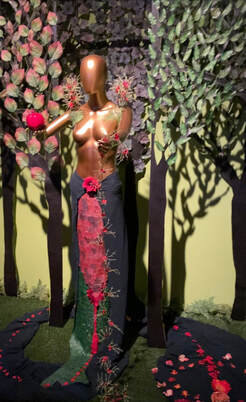
Eve
Although there is a reluctance to identify Eve as the first femme fatale in western tradition, the primordial woman's distinct qualities and behaviour epitomise the original definition of a femme fatale.
Lilith
Lilith is a female figure in Mesopotamian and Judaic mythology, alternatively the first wife of Adam and supposedly the primordial she-demon. Lilith is cited as having been "banished" from the Garden of Eden for not complying and obeying Adam. In Hebrew-language texts, the term lilith or lilit is translated as "night creatures", "night monster", "night hag", or "screech owl". Commentators and interpreters often envision the figure of Lilith as a dangerous demon of the night, who is sexually wanton, and who steals babies in the darkness.
Lamia, in ancient Greek mythology, was a child-eating monster and, in later tradition, was regarded as a type of night-haunting spirit (daemon). In the earliest stories, Lamia was a beautiful queen of Libya who had an affair with Zeus. Lamia has been ascribed serpentine qualities, which some commentators believe can be firmly traced to mythology from antiquity, and they have found analogues in ancient texts that could be designated as lamiai (or lamiae) which are part-serpent beings, half-women, half-snake beasts.
Although there is a reluctance to identify Eve as the first femme fatale in western tradition, the primordial woman's distinct qualities and behaviour epitomise the original definition of a femme fatale.
Lilith
Lilith is a female figure in Mesopotamian and Judaic mythology, alternatively the first wife of Adam and supposedly the primordial she-demon. Lilith is cited as having been "banished" from the Garden of Eden for not complying and obeying Adam. In Hebrew-language texts, the term lilith or lilit is translated as "night creatures", "night monster", "night hag", or "screech owl". Commentators and interpreters often envision the figure of Lilith as a dangerous demon of the night, who is sexually wanton, and who steals babies in the darkness.
Lamia, in ancient Greek mythology, was a child-eating monster and, in later tradition, was regarded as a type of night-haunting spirit (daemon). In the earliest stories, Lamia was a beautiful queen of Libya who had an affair with Zeus. Lamia has been ascribed serpentine qualities, which some commentators believe can be firmly traced to mythology from antiquity, and they have found analogues in ancient texts that could be designated as lamiai (or lamiae) which are part-serpent beings, half-women, half-snake beasts.
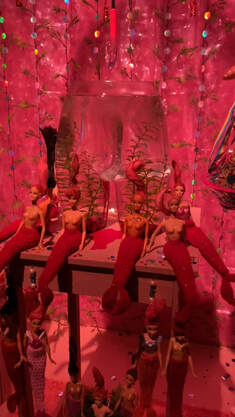
The Sirens
The Siren or water nymph takes the form of either a bird woman or fish woman. In Greek mythology, the sirens were dangerous creatures, who lured nearby sailors with their enchanting music and singing voices to shipwreck on the rocky coast of their island. It is also said that they can even charm the winds. The seventh-century Anglo-Latin catalogue Liber Monstrorum says that sirens were women from their heads to their navels, and instead of legs they had fish tails.The tenth-century Byzantine encyclopedia Suda says that from their chests up, sirens had the form of sparrows, and below they were women or, alternatively, that they were little birds with women's faces.
The sirens were called the Muses of the lower world. Classical scholar Walter Copland Perry (1814–1911) observed: "Their song, though irresistibly sweet, was no less sad than sweet, and lapped both body and soul in a fatal lethargy, the forerunner of death and corruption." Their song is continually calling on Persephone.
By the time of the Renaissance, female court musicians known as courtesans filled the role of an unmarried companion, and musical performances by unmarried women could be seen as immoral. Seen as a creature who could control a man's reason, female singers became associated with the mythological figure of the siren, who usually took a half-human, half-animal form somewhere on the cusp between nature and culture.
Sirens continued to be used as a symbol for the dangerous temptation embodied by women regularly throughout Christian art of the medieval era; however, in the 17th century, some Jesuit writers began to assert their actual existence, including Cornelius a Lapide, who said of woman, "her glance is that of the fabled basilisk, her voice a siren's voice—with her voice she enchants, with her beauty she deprives of reason—voice and sight alike deal destruction and death." Antonio de Lorea also argued for their existence, and Athanasius Kircher argued that compartments must have been built for them aboard Noah's Ark.
The Siren or water nymph takes the form of either a bird woman or fish woman. In Greek mythology, the sirens were dangerous creatures, who lured nearby sailors with their enchanting music and singing voices to shipwreck on the rocky coast of their island. It is also said that they can even charm the winds. The seventh-century Anglo-Latin catalogue Liber Monstrorum says that sirens were women from their heads to their navels, and instead of legs they had fish tails.The tenth-century Byzantine encyclopedia Suda says that from their chests up, sirens had the form of sparrows, and below they were women or, alternatively, that they were little birds with women's faces.
The sirens were called the Muses of the lower world. Classical scholar Walter Copland Perry (1814–1911) observed: "Their song, though irresistibly sweet, was no less sad than sweet, and lapped both body and soul in a fatal lethargy, the forerunner of death and corruption." Their song is continually calling on Persephone.
By the time of the Renaissance, female court musicians known as courtesans filled the role of an unmarried companion, and musical performances by unmarried women could be seen as immoral. Seen as a creature who could control a man's reason, female singers became associated with the mythological figure of the siren, who usually took a half-human, half-animal form somewhere on the cusp between nature and culture.
Sirens continued to be used as a symbol for the dangerous temptation embodied by women regularly throughout Christian art of the medieval era; however, in the 17th century, some Jesuit writers began to assert their actual existence, including Cornelius a Lapide, who said of woman, "her glance is that of the fabled basilisk, her voice a siren's voice—with her voice she enchants, with her beauty she deprives of reason—voice and sight alike deal destruction and death." Antonio de Lorea also argued for their existence, and Athanasius Kircher argued that compartments must have been built for them aboard Noah's Ark.
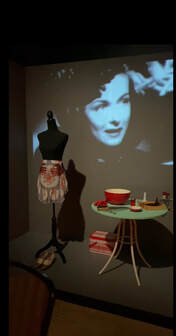
The Film Noir Femme Fatale
The femme fatale, considered by many the central figure of film noir, is mysterious and enchanting. She is known for using her mind and body strategically in order to seduce men into compromising and often deadly situations. Her character is independent with undoubting sexual confidence and a laconic personality. The femme fatale does things by her own book, rejecting social expectations even if it deems her as immoral and/or bad.
The Perfect 50's Housewife
We all thought the 50’s housewife was such a neat and tidy little creature doing her thing, looking demure and sweet all the time, but under that perfect exterior, our Betty Homemaker is methodically planning her husband's demise.
The femme fatale, considered by many the central figure of film noir, is mysterious and enchanting. She is known for using her mind and body strategically in order to seduce men into compromising and often deadly situations. Her character is independent with undoubting sexual confidence and a laconic personality. The femme fatale does things by her own book, rejecting social expectations even if it deems her as immoral and/or bad.
The Perfect 50's Housewife
We all thought the 50’s housewife was such a neat and tidy little creature doing her thing, looking demure and sweet all the time, but under that perfect exterior, our Betty Homemaker is methodically planning her husband's demise.
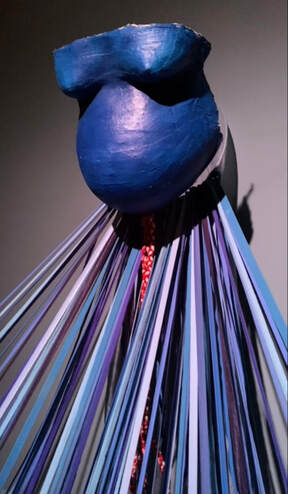
Medea
In Greek mythology, Medea is the daughter of King Aeëtes of Colchis, a niece of Circe and the granddaughter of the sun god Helios. Medea figures in the myth of Jason and the Argonauts, but is best known from Euripides' tragedy Medea and Apollonius of Rhodes' epic Argonautica. Medea is known in most stories as a sorceress and is often depicted as a priestess of the goddess Hecate.
Medea plays the archetypal role of helper-maiden, aiding Jason in his search for the Golden Fleece by using her magic to save his life out of love. Once he finished his quest, she abandons her native home of Colchis, and flees westwards with Jason, where they eventually settle in Corinth and get married. Euripides' 5th century BC tragedy Medea, depicts the ending of said union with Jason, when after ten years of marriage, Jason abandons her to wed king Creon's daughter Creusa. Medea and her sons by Jason are to be banished from Corinth. In revenge, she murders Creusa with poisoned gifts. Later, she murders her own sons by Jason before fleeing for Athens, where she eventually marries king Aegeus.
The Virgin Mary
According to the gospels of Matthew and Luke in the New Testament, Mary was a first-century Jewish woman of Nazareth, the wife of Joseph, and the mother of Jesus. Both the New Testament and the Quran describe Mary as a virgin. According to Christian theology, Mary conceived Jesus through the Holy Spirit while still a virgin, and accompanied Joseph to Bethlehem, where Jesus was born.
Mary has been venerated since early Christianity, and is considered by millions to be the holiest and greatest saint because of her extraordinary virtues as seen at the Annunciation by the archangel Gabriel. She is said to have miraculously appeared to believers many times over the centuries.
La Llorona
In Mexican folklore, La Llorona "The Weeping Woman" or "The Wailer") is a vengeful ghost who roams waterfront areas mourning her children whom she drowned.
The legend has a wide variety of details and versions. In a typical version of the legend, a beautiful woman named María marries a rich ranchero / conquistador to whom she bears two children. One day, María sees her husband with another woman and in a fit of blind rage, she drowns their children in a river, which she immediately regrets. Unable to save them and consumed by guilt, she drowns herself as well but is unable to enter the afterlife, forced to be in purgatory and roam this earth until she finds her children.
In Greek mythology, Medea is the daughter of King Aeëtes of Colchis, a niece of Circe and the granddaughter of the sun god Helios. Medea figures in the myth of Jason and the Argonauts, but is best known from Euripides' tragedy Medea and Apollonius of Rhodes' epic Argonautica. Medea is known in most stories as a sorceress and is often depicted as a priestess of the goddess Hecate.
Medea plays the archetypal role of helper-maiden, aiding Jason in his search for the Golden Fleece by using her magic to save his life out of love. Once he finished his quest, she abandons her native home of Colchis, and flees westwards with Jason, where they eventually settle in Corinth and get married. Euripides' 5th century BC tragedy Medea, depicts the ending of said union with Jason, when after ten years of marriage, Jason abandons her to wed king Creon's daughter Creusa. Medea and her sons by Jason are to be banished from Corinth. In revenge, she murders Creusa with poisoned gifts. Later, she murders her own sons by Jason before fleeing for Athens, where she eventually marries king Aegeus.
The Virgin Mary
According to the gospels of Matthew and Luke in the New Testament, Mary was a first-century Jewish woman of Nazareth, the wife of Joseph, and the mother of Jesus. Both the New Testament and the Quran describe Mary as a virgin. According to Christian theology, Mary conceived Jesus through the Holy Spirit while still a virgin, and accompanied Joseph to Bethlehem, where Jesus was born.
Mary has been venerated since early Christianity, and is considered by millions to be the holiest and greatest saint because of her extraordinary virtues as seen at the Annunciation by the archangel Gabriel. She is said to have miraculously appeared to believers many times over the centuries.
La Llorona
In Mexican folklore, La Llorona "The Weeping Woman" or "The Wailer") is a vengeful ghost who roams waterfront areas mourning her children whom she drowned.
The legend has a wide variety of details and versions. In a typical version of the legend, a beautiful woman named María marries a rich ranchero / conquistador to whom she bears two children. One day, María sees her husband with another woman and in a fit of blind rage, she drowns their children in a river, which she immediately regrets. Unable to save them and consumed by guilt, she drowns herself as well but is unable to enter the afterlife, forced to be in purgatory and roam this earth until she finds her children.
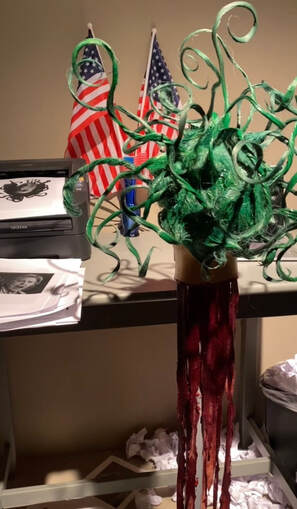
Medusa
In Greek mythology, Medusa also called Gorgo, was one of the three monstrous Gorgons, generally described as winged human females with living venomous snakes in place of hair. Those who gazed into her eyes would turn to stone. Medusa was originally a beautiful maiden, but when Poseidon had sex with her in Athena's temple, Athena punished Medusa by transforming her beautiful hair into horrible snakes.
In most versions of the story, she was beheaded by the hero Perseus, who was sent to fetch her head by King Polydectes of Seriphus because Polydectes wanted to marry Perseus's mother. The gods were well aware of this, and Perseus received help. He received a mirrored shield from Athena, sandals with gold wings from Hermes, a sword from Hephaestus and Hades' helm of invisibility. Since Medusa was the only one of the three Gorgons who was mortal, Perseus was able to slay her while looking at the reflection from the mirrored shield he received from Athena. During that time, Medusa was pregnant by Poseidon. When Perseus beheaded her, Pegasus, a winged horse, and Chrysaor, a giant wielding a golden sword, sprang from her body.
In Greek mythology, Medusa also called Gorgo, was one of the three monstrous Gorgons, generally described as winged human females with living venomous snakes in place of hair. Those who gazed into her eyes would turn to stone. Medusa was originally a beautiful maiden, but when Poseidon had sex with her in Athena's temple, Athena punished Medusa by transforming her beautiful hair into horrible snakes.
In most versions of the story, she was beheaded by the hero Perseus, who was sent to fetch her head by King Polydectes of Seriphus because Polydectes wanted to marry Perseus's mother. The gods were well aware of this, and Perseus received help. He received a mirrored shield from Athena, sandals with gold wings from Hermes, a sword from Hephaestus and Hades' helm of invisibility. Since Medusa was the only one of the three Gorgons who was mortal, Perseus was able to slay her while looking at the reflection from the mirrored shield he received from Athena. During that time, Medusa was pregnant by Poseidon. When Perseus beheaded her, Pegasus, a winged horse, and Chrysaor, a giant wielding a golden sword, sprang from her body.
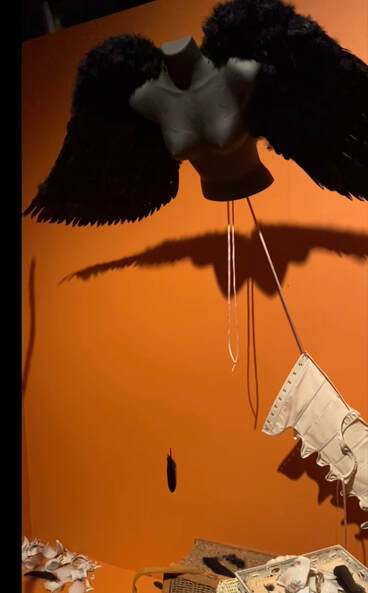
The Harpies
They were generally depicted as birds with the heads of maidens, faces pale with hunger and long claws on their hands. Roman and Byzantine writers detailed their ugliness. Pottery art depicting the harpies featured beautiful women with wings. Ovid described them as human-vultures.
To Hesiod, they were imagined as fair-locked and winged maidens, who flew as fast as the wind.
To Virgil, they were bird-bodied, girl-faced things. Their hands are talons, their faces haggard with insatiable hunger.
The harpies seem originally to have been wind spirits (personifications of the destructive nature of wind). Their name means "snatchers" or "swift robbers" and they steal food from their victims while they are eating and carry evildoers (especially those who have killed their families) to the Erinyes. When a person suddenly disappeared from the Earth, it was said that he had been carried off by the harpies. Thus, they carried off the daughters of King Pandareus and gave them as servants to the Erinyes. In this form they were agents of punishment who abducted people and tortured them on their way to Tartarus. They were vicious, cruel, and violent.
They were generally depicted as birds with the heads of maidens, faces pale with hunger and long claws on their hands. Roman and Byzantine writers detailed their ugliness. Pottery art depicting the harpies featured beautiful women with wings. Ovid described them as human-vultures.
To Hesiod, they were imagined as fair-locked and winged maidens, who flew as fast as the wind.
To Virgil, they were bird-bodied, girl-faced things. Their hands are talons, their faces haggard with insatiable hunger.
The harpies seem originally to have been wind spirits (personifications of the destructive nature of wind). Their name means "snatchers" or "swift robbers" and they steal food from their victims while they are eating and carry evildoers (especially those who have killed their families) to the Erinyes. When a person suddenly disappeared from the Earth, it was said that he had been carried off by the harpies. Thus, they carried off the daughters of King Pandareus and gave them as servants to the Erinyes. In this form they were agents of punishment who abducted people and tortured them on their way to Tartarus. They were vicious, cruel, and violent.
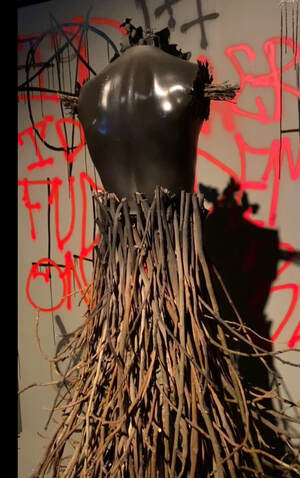
The Witch
In medieval and early modern Europe, where the term originated, accused witches were usually women who were believed to have attacked their own community, and often to have communed with evil beings. It was thought witchcraft could be thwarted by protective magic or counter-magic, which could be provided by cunning folk or folk healers. Suspected witches were also intimidated, banished, attacked or killed. Often they would be formally prosecuted and punished, if found guilty or simply believed to be guilty. European witch-hunts and witch trials in the early modern period led to tens of thousands of executions. Although some folk healers were accused of witchcraft, they made up a minority of those accused. European belief in witchcraft gradually dwindled during and after the Age of Enlightenment.
The classical period of witch-hunts in Early Modern Europe and Colonial America took place in the Early Modern period or about 1450 to 1750, spanning the upheavals of the Reformation and the Thirty Years' War, resulting in an estimated 35,000 to 50,000 executions.
In medieval and early modern Europe, where the term originated, accused witches were usually women who were believed to have attacked their own community, and often to have communed with evil beings. It was thought witchcraft could be thwarted by protective magic or counter-magic, which could be provided by cunning folk or folk healers. Suspected witches were also intimidated, banished, attacked or killed. Often they would be formally prosecuted and punished, if found guilty or simply believed to be guilty. European witch-hunts and witch trials in the early modern period led to tens of thousands of executions. Although some folk healers were accused of witchcraft, they made up a minority of those accused. European belief in witchcraft gradually dwindled during and after the Age of Enlightenment.
The classical period of witch-hunts in Early Modern Europe and Colonial America took place in the Early Modern period or about 1450 to 1750, spanning the upheavals of the Reformation and the Thirty Years' War, resulting in an estimated 35,000 to 50,000 executions.
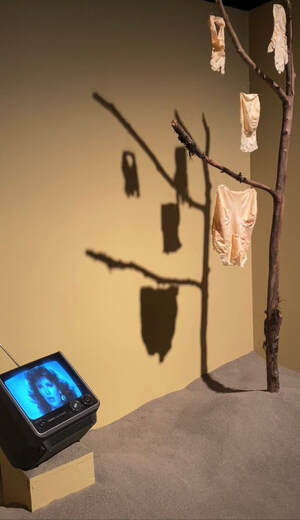
Inanna/Ishtar
Inanna is an ancient Mesopotamian goddess associated with love, beauty, sex, war, justice and political power. She was originally worshiped in Sumer under the name "Inanna", and was later worshiped by the Akkadians, Babylonians, and Assyrians under the name "Ishtar". She was known as the "Queen of Heaven" and was the patron goddess of the Eanna temple at the city of Uruk, which was her main cult center. She was associated with the planet Venus and her most prominent symbols included the lion and the eight-pointed star.
In the Epic of Gilgamesh, Inanna/Ishtar asks Gilgamesh to become her consort. When he refuses, she unleashes the Bull of Heaven, resulting in the death of Enkidu and Gilgamesh's subsequent grapple with his mortality.
Inanna/Ishtar's most famous myth is the story of her descent into and return from Kur, the Ancient Mesopotamian underworld, a myth in which she attempts to conquer the domain of her older sister Ereshkigal, the queen of the underworld, but is instead deemed guilty by the seven judges of the underworld and struck dead. Three days later, Ninshubur (her personal attendant) pleads with all the gods to bring Inanna back, but all of them refuse her except Enki, who sends two sexless beings to rescue Inanna. They escort Inanna out of the underworld, but the galla, the guardians of the underworld, drag her husband Dumuzid down to the Underworld as her replacement. Dumuzid is eventually permitted to return to heaven for half the year while his sister Geshtinanna remains in the underworld for the other half, resulting in the cycle of the seasons.
Inanna is an ancient Mesopotamian goddess associated with love, beauty, sex, war, justice and political power. She was originally worshiped in Sumer under the name "Inanna", and was later worshiped by the Akkadians, Babylonians, and Assyrians under the name "Ishtar". She was known as the "Queen of Heaven" and was the patron goddess of the Eanna temple at the city of Uruk, which was her main cult center. She was associated with the planet Venus and her most prominent symbols included the lion and the eight-pointed star.
In the Epic of Gilgamesh, Inanna/Ishtar asks Gilgamesh to become her consort. When he refuses, she unleashes the Bull of Heaven, resulting in the death of Enkidu and Gilgamesh's subsequent grapple with his mortality.
Inanna/Ishtar's most famous myth is the story of her descent into and return from Kur, the Ancient Mesopotamian underworld, a myth in which she attempts to conquer the domain of her older sister Ereshkigal, the queen of the underworld, but is instead deemed guilty by the seven judges of the underworld and struck dead. Three days later, Ninshubur (her personal attendant) pleads with all the gods to bring Inanna back, but all of them refuse her except Enki, who sends two sexless beings to rescue Inanna. They escort Inanna out of the underworld, but the galla, the guardians of the underworld, drag her husband Dumuzid down to the Underworld as her replacement. Dumuzid is eventually permitted to return to heaven for half the year while his sister Geshtinanna remains in the underworld for the other half, resulting in the cycle of the seasons.
CHICK FIGHT is generously supported by our major donors; Ronni Lacroute, Jessie Jonas, Ellyn Bye, Ed Hamilton, and the Rose and David Dortort Foundation.
We'd also like to thank the foundations listed below, members of Shaking the Tree's Board, as well as many other individual supporters. If you loved what you saw today and want to support our work, please visit our SUPPORT page, or donate below.
We'd also like to thank the foundations listed below, members of Shaking the Tree's Board, as well as many other individual supporters. If you loved what you saw today and want to support our work, please visit our SUPPORT page, or donate below.
Join our Email List
Sign up for our email newsletter to find out the latest on upcoming shows, classes, and events.
Connect with Us
Shaking the Tree Theatre is located at 823 SE Grant St.
Portland, OR 97214
Oue main office is located at 2136 SE 8th Ave
Portland, OR 97214
For our theatre: Look for the Big Blue Warehouse on the corner od SE 9th and Grant and enter through the gate.
For our main office: look for the beautiful mural on the corner of SE 8th and Grant. Entrance is on SE 8th.
Major Funding provided by
The Regional Arts & Culture Council, including support from the City of Portland, Multnomah County, the Arts Education & Access Fund, Prosper Portland, the James F. and Marion L. Miller Foundation, the Marie Lamfrom Charitable Foundation, the Oregon Community Foundation, the Shubert Foundation, the National Endowment for the Arts, the Oregon Cultural Trust, the Oregon Arts Commission, the Rose and David Dortort Foundation, supporting organization of the California Community Foundation, Portland Events and Film, and the Multnomah County Cultural Coalition.
